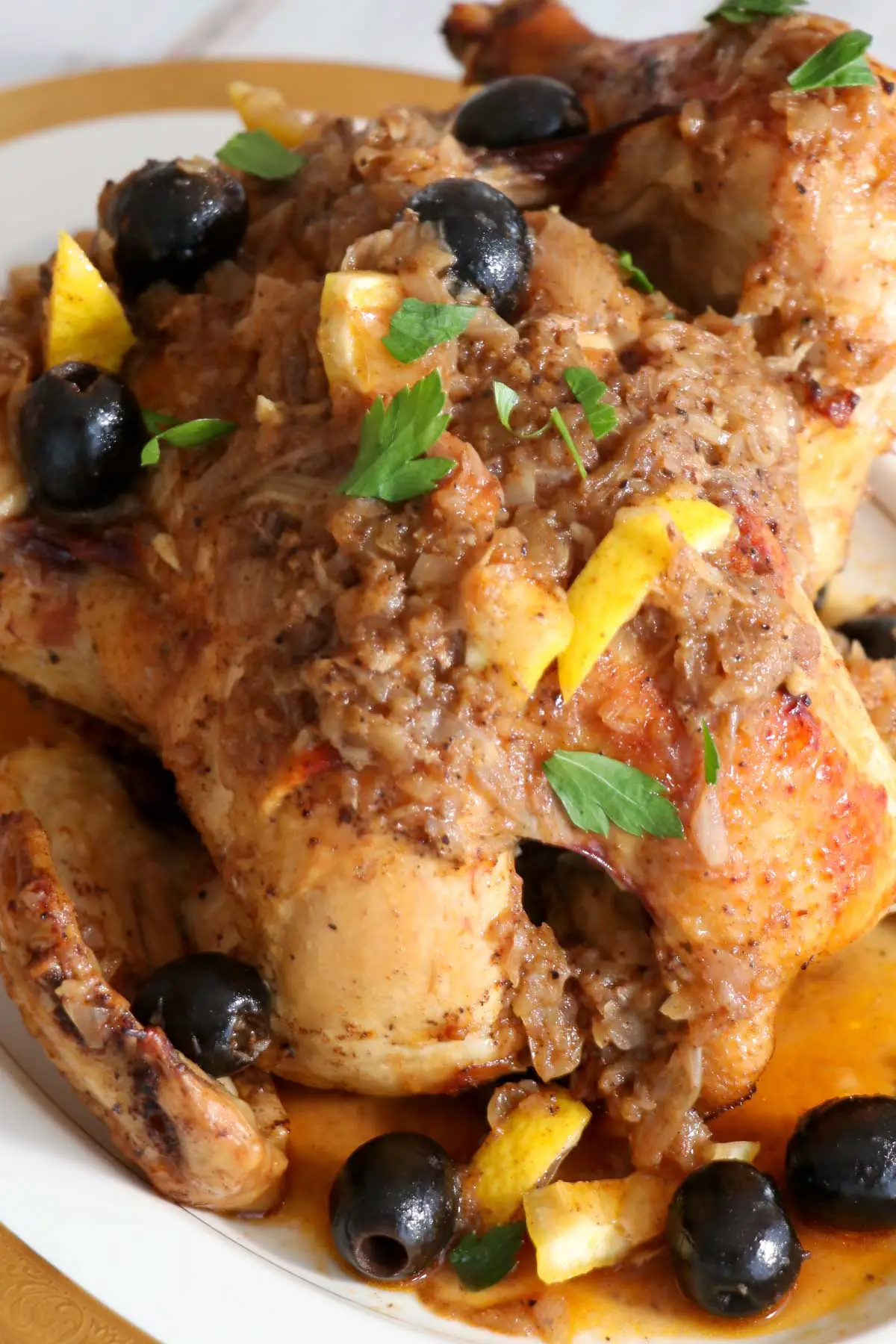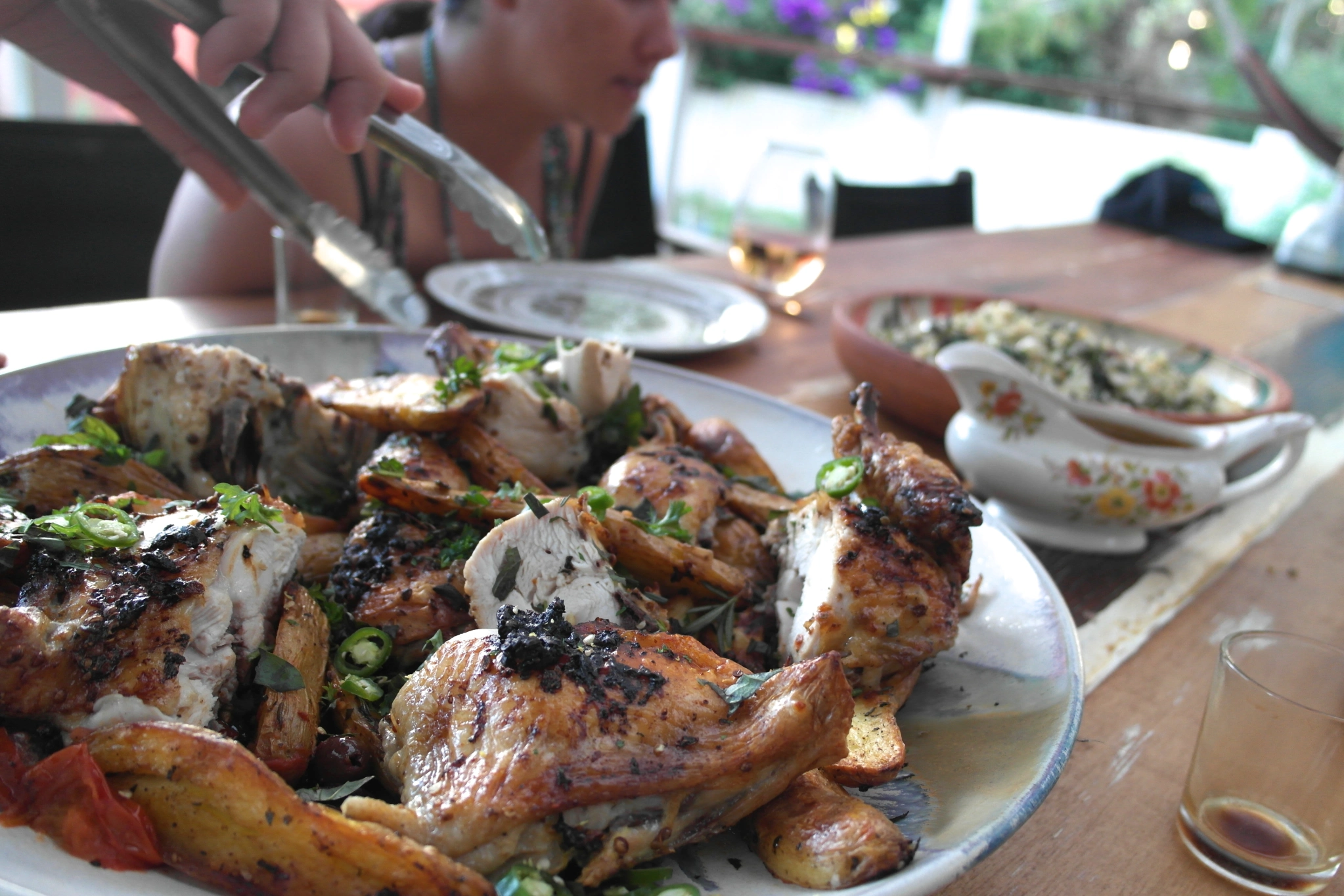Middle-Eastern then and now
- rosemary
- Mar 21, 2023
- 6 min read
"Fusion is just a way of describing what we are doing today. When you think of the Ottoman Empire, that's exactly what they were doing – fusion!" Ibrahim Kasif

This is a guru week. By which I mean that I am planning to choose a recipe from one of my 'middle-period' gurus and make it for dinner one night. And this week it's Claudia Roden's turn. Still going strong though over 80. Two years ago she brought out this book - Med - which is, I believe a summation, in a way, of her life. I have yet to buy it but have promised myself I will.
A Book of Middle-Eastern Food opened up a whole new world of cooking for me and I used it extensively. Before that I had only Elizabeth David (occasionally) and Robert Carrier (also occasionally) to introduce me to this world. Now, of course, Middle-Eastern food is ubiquitous and everyday. A brief glance at the recipe indexes of the latest supermarket magazines turned up several Middle-Eastern inspired things from fattoush to couscous. Hummus and felafels are 'ordinary'. Chick peas - and other beans - stack the supermarket shelves as do sumac, tahini, za'atar, filo pastry, preserved lemons, yoghurt, couscous, ... but alas, not yet anyway, aleppo chilli ...

We have come a long way, and this was brought home to me when I opened up Claudia Roden's modest - no pictures - almost learned collection of recipes. Indeed I still turn to her for stuffed vine-leaves and dukkah and occasionally for other things too. However, I confess that when I started looking for a main dish to cook this week for dinner one day, I was disappointed at what seemed to me to be very ordinary dishes. These days we have Ottolenghi and his team to inspire and excite us all as well as our own Middle-Eastern gurus such as Greg Malouf, Joseph Abboud, Shane Delia, Tom Sarafian, not to mention the pioneer - Abla and heaps of others. Actually there are too many others to mention. And although they are all very firmly rooted in the cuisine of their parents and grandparents, they experiment and innovate. And so Claudia Roden's book seemed just a little dull.
Which is just a recognition of how the times they change. When I first was given that book by David I was so excited. It opened up a whole new world of possibilities - discovering new things like filo pastry with its associated techniques of creating everything from baklava to brik, all those dips - I still use her recipe for hummus and baba ghanoush, tagines and khoresh. Now all those things have become mainstream and because we are increasingly and constantly in search of something new these days, our tastes have expanded. I suspect Claudia Roden did not include much that needed sumac and za'atar and she even felt the need to show us how to make yoghurt. And I did.
And the other thing that has happened is that we have become a bit more specific. Apparently the first of the Middle-Easterners to come here in large numbers were from Lebanon and Turkey, now it is Syria, Iraq and Iran. And you will find cookbooks and gurus who concentrate on just one country - or even one section of it as in Ottolenghi and Sami Tamimi's Jerusalem and Tamimi's own Falastin. I don't think that the definition of Middle-Eastern has changed but consider - it's a pretty non-descriptive name for countries from Morocco on the north-east African coast, to Iran - almost India and south the Yemen and Sudan. And where does Afghanistan fit in all of this? It's not even all Arabic - the Turks, Israelis, Iranians are not Arabic - well not all of them anyway. Or not even one religion - Islam - although it is pretty widespread. It's a huge area with a massive variety of food and yet a hard-to-define commonality. Is it the legumes, the yoghurt, the spices, the vegetables?
And it is a region of conflict - always has been and hence we have waves of emigrants and refugees scattering throughout the world and taking their food with them:
"My compilation of recipes is the joint creation of numerous Middle Easterners who, like me, are in exile, either forced and permanent, or voluntary and temporary. It is the fruit of nostalgic longing for, and delighted savouring of, a food that was the constant joy of life in a world so different from the Western one." Claudia Roden
Food reminds us of home wherever that was. And tamper with it if you dare. Well that's what Greg Malouf and his brother laughingly said, saying that the biggest barriers to innovation and experiment were their mother and grandmothers.
"If food is the conduit to an imagined family home and to a country left behind, then experimentation becomes an act of dishonour. " Alecia Simmonds/Gourmet Traveller
However, to illustrate the way times have changed I have chosen two recipes from A Book of Middle-Eastern Food and searched to see how it has changed over the years.

The first is Ful medames - a humble breakfast dish from Egypt, which at its simplest consist of stewed fava beans, flavoured with lemon and olive oil. The recipe link here is to a website called Ten More Bites and is a slightly adapted version to that in Claudia Roden's book. In her Introduction Claudia Roden gives it as a wonderful example of how food can revive memories of home:
"Ceremoniously, we sprinkled the beans with olive oil, squeezed a little lemon over them, seasoned them with salt and pepper, and placed a hot hard-boiled egg in their midst. Delicious ecstasy! Silently, we ate the beans, whole and firm at first, then we squashed them with our forks and combined their floury texture and slightly dull earthy taste with the acid tang of lemon, mellowed by the olive oil; finally, we crumbled the egg, matching its earthiness with that of the beans, its pale warm yellow with their dull brown." Claudia Roden
These days, maybe because it's such a basic dish and therefore a canvas to be decorated, there are many, dare I say more interesting, versions.

Sami Tamimi - Ottolenghi's business partner and co-chef at one point - in his book Falastin - has a relatively simple version shown here, but then, in the manner of many modern cookbooks, he adds suggestions as to how you can vary it even more:
"Playing around: We've given the directions for some sumac onions, a simple salsa and a soft-boiled egg, but really you can go in all sorts of directions: fried eggs, a simple sprinkle of parsley, some chopped spring onions, coarsely grated hard-boiled eggs - they all work well." Sami Tamimi/Tara Wiley
And the website Cooks Without Borders which features the recipe in a review of the book says of it"
"Basically, ful medames is doctored canned fava beans, and recipes are often as simple as dumping them in a pan, heating them up, mashing a bit with garlic, chile and lemon juice, then topping with raw chopped tomato, parsley and olive oil. For this version, you drain and rinse the beans first then simmer in water — ridding them of their canned taste. Once they’re drained again, cumin is invited to the party, along with the lemon, garlic and chile. A delightful salad of red onion, sumac and parsley goes on top, along with tomato; avocado adds cool and creamy depth. Soft boiled egg, which is optional, adds another dimension." Cooks Without Borders
Tom Sarafian looks to have done something similar although a little more so and you would have to say that it is a long way from Claudia Roden's simple version. You can barely see the beans. Greg Malouf in a somewhat cheffy way, adds chickpeas to the mix and takes the fusion theme out of the Middle-East and into Italy with burrata to produce Burrata with broad beans and chickpea stew. The star ingredient is now the burrata rather than the beans.
But he still calls it Ful-medames in brackets. I wonder at what point the name Ful-medames becomes irrelevant.
The other dish I looked at was a tagine of chicken and olives - a dish so well-known that you can probably get it as a frozen meal. And Claudia Roden herself has meddled with it from her original version of Chicken with lemon and olives; Tagine of chicken with preserved lemon and olives in her really wonderfufl book Arabesque; to her latest - Chicken tray-bake with olives and boiled lemon from Med. Fundamentally the same ingredients but very different approaches even though the titles of the dish are very similar.
Then there are two outliers: Chicken tagine with green herb couscous from the wonderful Greg Malouf, and one from a website called Food is the Best Shit Ever, concocted by the writer of the website, but inspired by Greg Malouf's recipe and which she herself says shows “the indecision of a child of the modern world” It's not just world renowned chefs that fiddle. She calls it Middle Eastern inspired chicken with garlic and spices, really herby and lemony cauli-cous, roasted kipflers potatoes and citrus gravy.
I could go for that.

Claudia Roden, throughout her books, and, I believe, particularly in her most recent book Med, talks of the influences upon her food of her childhood in Egypt, her Jewish roots, her journeys all around the Middle-East and sometimes beyond; describing the food as something she uses: "to summon the ghosts of our past." So shall I choose a recipe that I know I have made before thereby summoning my own ghosts of the past, or shall I choose something new from her book that I may have potentially overlooked - maybe Lama bi Ajeen - that kind of meaty Lebanese pizza, as shown here?
"The indecision of a child of the modern world."
















Comments